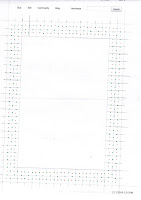
Moroccan Chicken with Preserved Lemon
1 cinnamon stick
1 teaspoon whole black peppercorn
1 teaspoon cumin seed
1 teaspoon sweet paprika
1 teaspoon red pepper flakes
1/4 teaspoon whole clove
3 tablesppons extra-virgin olive oil
4 cloves garlic
1 teaspoon ginger
2 bay leaves
1 large pinch saffron
3.75 lbs boneless skinless chicken breasts
salt and pepper
1 medium onion
4 preserved lemons
1/2 cup dried green olives
1.5 cups chicken stock
I added the cinnamon, peppercorns, cumin, paprika, red pepper flakes, and cloves to a skillet dry skillet and cooked them over medium high heat until they started to smoke. Then I grinded them in out spice grinder.
I cut the chicken into 10 pieces and added the smoked spice mixture along with the oil, garlic, bay leaves and saffron. I tossed this until the chicken was thoroughly coated though I wish I would have tossed and then added the bay leaves because they got a bit crushed in the process.
I then allowed the chicken to marinade for two hours.
In a large pot I browned the chicken and then set it aside. In the same pot I added the onions rough cut and browned on medium high. Then I added the 2 preserved lemons cut into strips with the flesh removed. Then I added the olives and chicken stock and re-added the chicken. I covered and cooked on low for about 30 minutes.
I served it with quinoa which I made with 2 more preserved lemon and a handful of tart dried cherries. Andrea thought the lemon was good but after half a bowl she thought it was too much. Not surprising because I quadrupled it from the original recipe. Maybe next time I'll leave it out of the quinoa.
Later, I'll have to post about preserving the lemons. I did it during the late summer and it couldn't have been easier.
\\\





